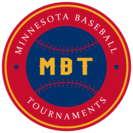9AA/AAA Casebook
Casebook for 9AA/AAA - Runner on third at time of pitch/play.
RULE: A runner occupying third base at the start of a play (time of pitch) may only advance home on a batted ball, a bases loaded walk/hit-by-pitch, or an attempted play on said runner.
* This rule modification is in effect for MBL league play and MBT State Tournament play. The rule is identical for both.
CASEBOOK:
SITUATION A
With R1 on first base and R3 on third base at the time of pitch, R1 attempts to steal second base after the ball has crossed home plate. The catcher throws the ball to second base in an attempt to put out R1. R3 runs home after the catcher makes the throw.
RULING: R3 is not allowed to score from third base as no play was made on R3.
SITUATION B
R1 on first base, R2 on second base and R3 on third base at the time of pitch. After receiving the pitch, the catcher throws the ball to second base in an attempt to put out R2, who is returning to the base. R3 runs toward home after the catcher makes the throw.
RULING: R3 is not allowed to score from third base in this situation. A catcher may throw to second or first base after the pitch in this situation, and R3 cannot advance home unless played upon.
SITUATIUON C
R1 on first base, R2 on second base and R3 on third base at the time of pitch. After receiving the pitch, the catcher throws the ball to third base in an attempt to put out R3.. The throw sails into left field. R3 advances home on the overthrow.
RULING: R3’s advance home is legal because he was played upon by the catcher.
SITUATION D
R2 on second base at time of pitch. R2 attempts to steal third base after the ball has crossed home plate. The catcher’s throw sails into left field. R2 advances home on the overthrow.
RULING: R2’s advance home is legal because he was not occupying third base at the time of the pitch.
SITUATION E
R3 on third base, R1 on first base at time of pitch. R1 attempts to steal second base after the ball has crossed home plate. The catcher throws to second and R1 is safe. The shortstop then sees R3 off of third base and throws to third. The ball bounces past the third baseman and R3 advances home safely.
RULING: R3 is allowed to advance home because he was played upon.
SITUATION F
R2 on second base at time of pitch. B1 takes ball four, which is a wild pitch that hits the backstop and rolls toward the first base dugout. R2 sprints to third base, touches third and continues toward home, where he slides in safely.
RULING: Because this runner did not start at third base at the time of pitch, there are no special rule modifications governing this play. This play is legal. Note: the ball does not become dead after a base on balls. (It does become dead after a hit-by-pitch.)
SITUATION G
R2 on second base, R1 on first base at time of pitch. B1 takes ball four. After the pitch, the catcher's throw back to the pitcher goes over the pitcher's head. R2 sees the wild throw and tries to score. The catcher's throw to the pitcher occurred (a) before R2 touched third base or (b) after R2 had touched third base.
RULING: Legal in both (a) and (b). Because this runner did not start at third base at the time of pitch, there are no special rule modifications governing this play. Note: the ball does not become dead after a base on balls. (It does become dead after a hit-by-pitch.)


